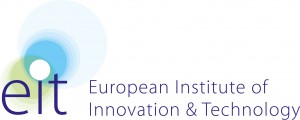The European Institute for Innovation and Technology (A European Commission body) has announced their Knowledge and Innovation Communities (KIC) calls for 2016:
- EIT Food: Food4future: sustainable supply chain from resources to consumers
- EIT Manufacturing: Added-value manufacturing
 To find out more and how you can get involved, the first port of call is the dedicated website, which includes slides outlining the announcement and timeline. There is also specific information for potential partners in the HE sector.
To find out more and how you can get involved, the first port of call is the dedicated website, which includes slides outlining the announcement and timeline. There is also specific information for potential partners in the HE sector.
If you are not sure what a KIC does, the EIT website details:
As new types of partnerships within the European innovation landscape, KICs are characterised by the following features:
- High degree of integration: each KIC is organised around an independent legal entity, gathering world-class KIC partners from all the innovation dimensions. The specificity of the KICs is to integrate, for the first time at EU level, education and entrepreneurship with research and innovation. The EIT does not address education, research and innovation independently but instead simultaneously, as constitutive elements of a single innovation chain, to deliver incremental and disruptive innovation.
- Long-term perspective: each KIC is set up for a minimum of seven years to contribute to overcoming fragmentation via world-class, long-term, integrated partnerships. This long-term perspective enables partners to commit to a strategic initiative for a longer time than in traditional innovation policy initiatives. It also ensures that the KIC is able to focus on short-, mid- and long-term objectives, remaining agile enough to adapt to emerging needs from the field in which they operate.
- Efficient governance: strong leadership is a pre-requisite; each KIC is driven by a CEO and KIC partners are represented by single legal entities for more streamlined decision-making. KICs must produce annual business plans, including an ambitious portfolio of activities from education to business creation, with clear targets and deliverables, looking for both market and societal impact.
- The co-location model: each KIC consists of five or six world-class innovation hotspots, building and leveraging on existing European capacities. A co-location centre brings together diverse teams of individuals from across the Knowledge Triangle together in one physical place (usually within partners’ universities or companies), acting as a hub for many KIC activities, and combining competences and skills developed in different areas of specialisation at a pan-European level.
- KICs culture: Europe needs to embrace a true entrepreneurial culture, which is essential for capturing the value of research and innovation, for setting-up new ventures and actual market deployment of innovations in potential high-growth sectors. KICs are doing just this by integrating education and entrepreneurship with research and innovation and operating according to business logic and a results-oriented approach.
Still not sure? Take a look at the websites for the existing KICs: EIT Raw Materials, Climate-KIC, EIT Digital, EIT Health and KIC Innoenergy to see who is involved and what they have achieved.











 New Nepal scoping review on maternal & neonatal health
New Nepal scoping review on maternal & neonatal health Fourth INRC Symposium: From Clinical Applications to Neuro-Inspired Computation
Fourth INRC Symposium: From Clinical Applications to Neuro-Inspired Computation Writing policy briefs
Writing policy briefs Upholding Excellence: The Concordat to Support Research Integrity
Upholding Excellence: The Concordat to Support Research Integrity ECR Funding Open Call: Research Culture & Community Grant – Application Deadline Friday 12 December
ECR Funding Open Call: Research Culture & Community Grant – Application Deadline Friday 12 December MSCA Postdoctoral Fellowships 2025 Call
MSCA Postdoctoral Fellowships 2025 Call ERC Advanced Grant 2025 Webinar
ERC Advanced Grant 2025 Webinar Horizon Europe Work Programme 2025 Published
Horizon Europe Work Programme 2025 Published Horizon Europe 2025 Work Programme pre-Published
Horizon Europe 2025 Work Programme pre-Published Update on UKRO services
Update on UKRO services European research project exploring use of ‘virtual twins’ to better manage metabolic associated fatty liver disease
European research project exploring use of ‘virtual twins’ to better manage metabolic associated fatty liver disease